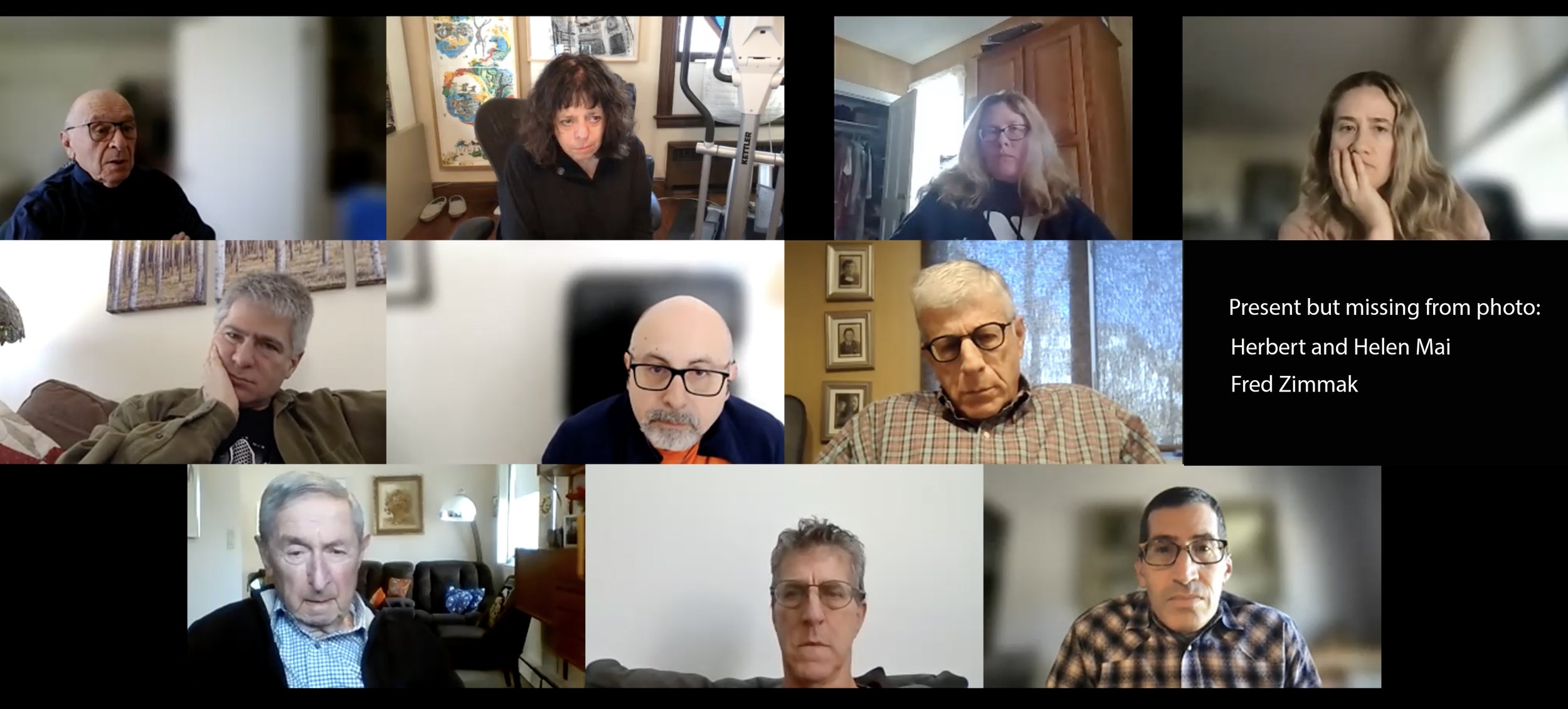Survivor and Descendants of the
Legacy of Jungfernhof [Mazjumpravmuiža]
On November 14, 2021, Karen Frostig established the first meeting for descendants and living survivors of the Jungfernhof concentration camp. At our first meeting, we sat together in amazement, finding each other after 80 years of learning one or two stray facts about family members deported to Riga. It was a great moment to sit with survivors who could speak directly about their experiences at the Jungfernhof concentration camp.
Today, we represent a group of more than fifty members from six countries: US - fourteen states, Germany - three cities, Argentina, Israel, France, and Sweden. We meet monthly as a group of 15-20 members. Typically, three survivors attend each meeting.
Meeting on Zoom. March 13, 2022. From left to right: Peter Stern, Karen Frostig, Karen Sime, Jennifer Sime, Steve Frankel, Pat Herbst, Howard Reissner, Fred Zeilberger, Marc Reissner, Alan Stern.
The Mass Grave
Between December 1941 and March 26, 1942 around 800 inmates died from brutal treatment, disease, or were taken to nearby woods and randomly shot by the Kommandant of the camp. Because of extreme temperatures during this harsh winter, the ground remained frozen for many months. The dead bodies couldn’t be buried and were piled up along a shed. In February 1942, they were taken to a nearby field and dumped into a blown-up mass grave.
In 2019, Karen invited Dr. Richard Freund, world-renowned Holocaust archeologist, to come to the site, using non-invasive ground penetrating radar to search for a mass grave. During the summer of 2021, digital indications of two mass graves were identified.
Our Mission
We gather as the descendants and survivors of the Jungfernhof concentration camp. We constitute a representative body of the victims and survivors of the deceased. As descendants we are committed to preserving the sanctity of the site. We hope to accomplish the following:
To form a collective voice to represent and preserve the memories of our families and the 3985 victims of this camp
To honor living survivors of the camp
To share testimonies and stories, bearing witness to the past
To promote educational goals concerning the history of intolerance that led to the deportations, internment, dehumanization, and murders
To work with officials in Germany, Austria, and Latvia, to support the process of creating a meaningful and lasting memorial at the site.
Meeting on Zoom. February 20, 2022. From left to right: Karen Frostig, Richards Plavnieks, Alfred Zeilberger, Robert Mai, Howard Reissner, Pete Sterns, Steve Frankel, Fred Zimmak, Marc Reissner, Pat Herbst, and Kim Yashek.
We are currently developing a directory for our members. We also have a number of committees that enable descendants to make a contribution to the project:
Compiling a group directory
Greeting committee, welcoming new members
Collecting new content, unpublished testimonies and video interviews from family survivors
Writing a group statement to be read at the 2024 commemorative event
Enlarging the Heirloom Gallery, collecting more heirloom objects and stories
Collecting copies of “last letters,” to be translated and uploaded to the site.
Mapping intersections, chance histories within the group
Searching for other descendants (especially in the US, UK, Australia, Argentina and South America, and South Africa).

